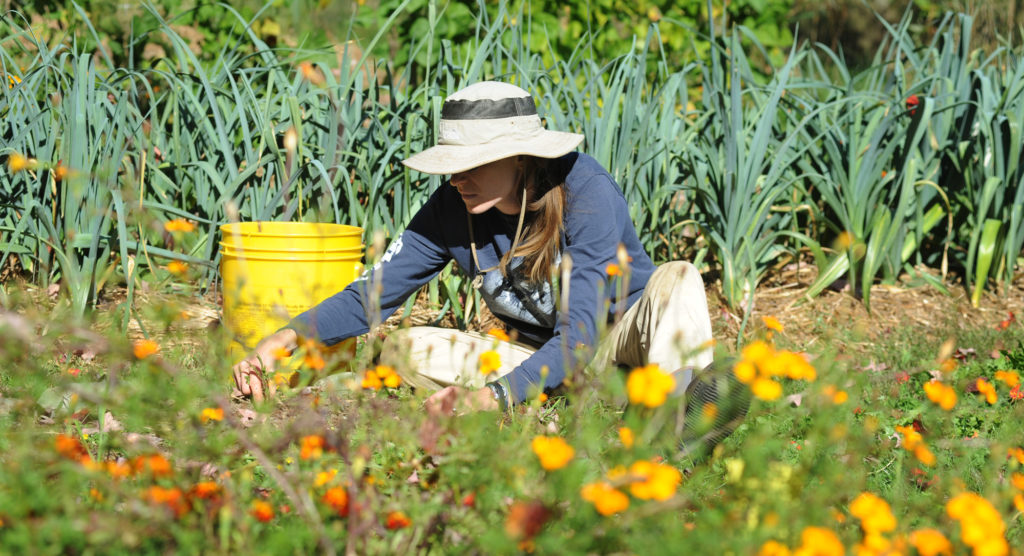Essential techniques of permaculture
You’ve read the books, done the research, observed your proposed growing area and selected what you hope is the perfect location. Now that you are ready to put the philosophies of permaculture into the practice of growing food, what are some essential techniques of permaculture to help you succeed?

Permaculture works with the natural patterns in nature to build up a garden that’s self-sustaining and less dependent on external additives like chemical fertilizers or outside water supplies.
“Permaculture is about using a design process where you make judgments based on the natural landscape,” said Jessie Watson, principal designer at Midcoast Permaculture in Maine. “You are working with your ecosystem.”
Using it as your design system, here are some essential techniques of permaculture to prepare and plant your garden based on your observations of your property.
Composting
Composting is important to any sort of gardening. You are recycling nutrients from organic waste back into the soil to help build it up and fertilize it. Composting is an essential technique of permaculture because it not only takes organics like food scraps, straw, grass clippings or fallen leaves out of the waste stream, composting them adds nutrients your garden needs. It also saves you money as you do not need to buy commercial fertilizer from a store.
Watson practices what he calls composting in place with the lasagna method.
In lasagna composting, you layer your organics directly over the soil where you will plant your future garden.
“If you are working where there is lawn grass or an established meadow, you might put a broadfork in the ground to loosen it up a bit first,” Watson said. “From there start your layers of organics.”
Lasagna composting is often practiced with sheet mulching, Watson said,
“Include some kind of layer of paper or biodegradable membrane-like newsprint or cardboard as the bottom layer,” he said. “That weed-suppressing layer of material is the sheet in sheet mulching.”
Layer organics like manure, kitchen scraps, leaves, grass or straw to about a one-foot depth and then top dress with hay or wood chips to hold it all in place until you are ready to plant the following season.
“You want to build up the organic matter and fertility of that soil before you even start thinking about planting,” Watson said. “Like a lot of farmers I know say, you don’t want to put a $5 plant into a $1 hole.”
Planning
Knowing what to plant where on your prepared soil makes planning an essential technique of permaculture.
“Make your easy mistakes on paper,” Watson said. “I like to come up with some kind of base map of my property based on my observations.”
By incorporating observations of which areas are sunny versus shady, how rainwater pools or flows and where the prevailing winds blow will help you make a planting plan that gives each seed or plant the best chance possible to grow in a specific area.
Watson suggest making a garden plan drawn to scale and to take into consideration of what your garden will look like at maturity.
“The biggest mistake people make is planting things too close together,” he said. “When you have seeds or small plants, it’s easy to forget that in a few months they are going to get bigger and crowd each other.”
By making your plan to scale based on the size of mature plants, Watson said you are saving yourself a lot of labor later on by not having to transplant or thin rows.
“It gives you a realistic idea of how much space you have and the limits of that space,” he said.
Planting
The first thing to do is to take your plan out to the proposed garden site and do some measuring.
“Do a layout of your garden and use a tape measure,” Watson said. “Then put a stake in the ground that says this where I am going to plant, for example, an apple tree. Then measure out and place the next stake for the next tree based on how large those trees will be at maturity.”

Do the same, on smaller scales, for row crops and seedlings, he said.
When applying the essential techniques of permaculture in planting your garden, it’s okay to avoid nice, straight rows.
Instead, if space allows, you can dig individual holes for plants scattered around your property and mulch around them.
Watering
In many areas, rainfall is free water provided by nature. So it makes sense to harvest rainwater for use in your garden.
There are numerous examples and plans for rainwater catchment systems online, like this one at Rainwater Harvesting. You can also refer to this rainwater collection calculator to determine what size storage tank you need.
“Having a good understanding of how water flows is key,” Watson said. “Then you can choose how you are going to capture that water.”
Putting these essential techniques of permaculture into practice and then observing the results will not only get your garden well on its productive way. It will also allow you to build on these techniques to keep improving it season after season.
